Related Reading:Topic | Messari 2022 In-Depth Research Report on Encryption Industry
The original text is from Messari, the original title is "Crypto Theses for 2022", translator | W3.Hitchhiker
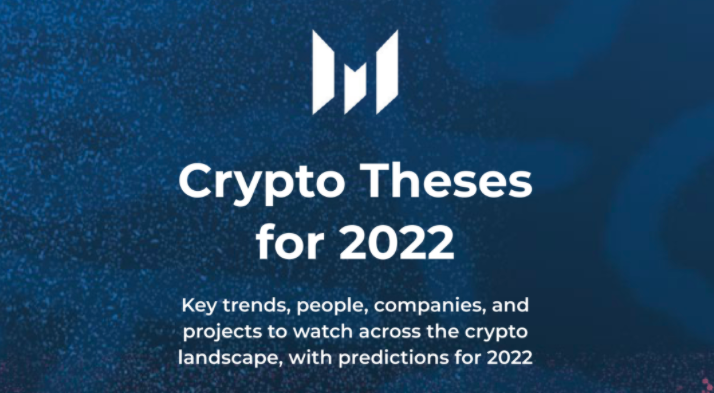
Related Reading:
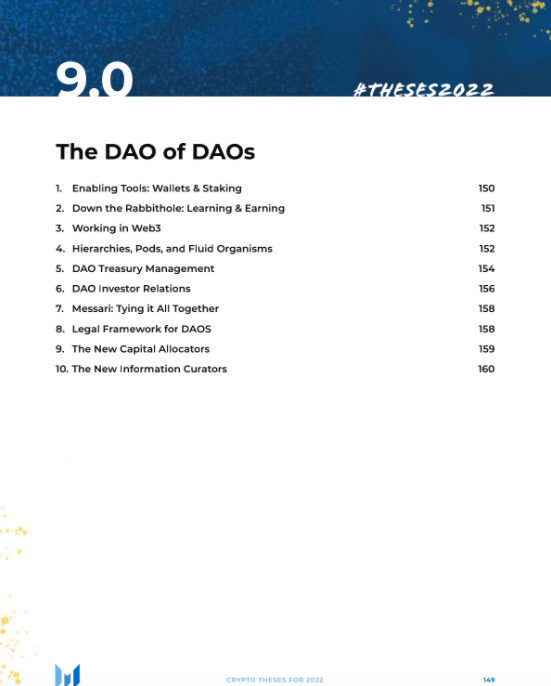
Topic | Messari 2022 In-Depth Research Report on Encryption Industry
The original text is from Messari, the original title is "Crypto Theses for 2022", translator | W3.Hitchhiker
Chapter 9 DAO also has a way
Whereas most technologies tend to automate tedious tasks to marginalized workers, blockchain automates decentralization. Not only does this not put taxi drivers out of a job, it puts centralized Uber out of a job, while letting taxi drivers work directly with customers. ——Vitalik Buterin
We discussed Decentralized Autonomous Organizations (DAOs) in the previous discussion in the regulatory section, but we did not focus on them. We need to explain them with a whole chapter. DAOs are one of the most important structures in cryptocurrencies. They will Change every aspect of the economy, politics, and maybe even your life for years to come. If 2020 was the year of DeFi and 2021 was about NFTs, then 2022 will be the year of the DAO.
So maybe we should start by answering, what is a DAO?
I described it to people over dinner, and I blurted it out as "a governance structure that manages the community's finances." Sounds pretty good too!
The Orca protocol Julia Rosenberg and Maria Gomez also attempted to promote and formalize this definition. They write that DAOs are 1) open-source and blockchain-based, 2) open to membership, 3) independent groups, 4) use tokens to govern the protocol and 5) allocate internal capital, with the goal of 6) automating marketplaces or features, 7) prevent collusion, and 8) incentivize bottom-up community participation.he Ultimate DAO Report* & Presentation, The Generalist, A Prehistory)*
As you can see, we're still figuring things out and making noise! The way we talk about them will change in the coming years. But no matter how they are defined, they will gradually grow and develop.
(More must read: T
secondary title
1. Enabling Tools: Wallets and Staking
What if the past 18 months were really just a necessary precursor and installation phase to a truly megatrend, social restructuring around token-governed communities?
If this is the case, you probably need tools to help you securely manage tokens and exchange them peer-to-peer (DeFi), you need better ways to build and optionally share your personal identity (NFTs), and ensure that You can move smoothly between communities regardless of which technology stack they use (L1-L2 bridging).The Interface PhaseWant to join a new social app? Point and click the avatar you want to wear in your new club. Betting on a game? Use real money or use your friend's "social credit" score. Applying for a new job? Optionally share badges and accumulated reputation that match your skills. All of this requires a front end, and a crypto wallet built today will act like your phone, an integral part of the operating system of your life.
(Required reading: Packy in his article "
"detailed in)
secondary title
2. Enter the Rabbithole: Learn and Earn Money
Rabbithole is one of the most exciting trends in the forefront of the cryptocurrency space: "learn to earn".
The crypto economy is booming, and the minds of users are melting from the pace of development. And one of the scarcest resources is attention and real user engagement. Rabbithole provides tasks to help users, test new products and earn token rewards. This is a win-win for all. The token team uses their funds (which is a working capital resource intended to be allocated for growth) to fund customer acquisition costs, the Rabbithole earns from helping the customer, and the users also win.
The fact that the company estimates that its users have earned an incredible $175 million from the task of registering an ENS Domain has drawn attention.
The "Learn to Earn" gameplay will be easily integrated into Web3 wallets and hosted wallets. They are user education programs that pay for themselves in the form of more crypto natives and therefore more long-term holders. A blockchain may also have a Rabbithole. The world is too big (and the community too religious?) because it's a winner takes all, and I hope that "task developers" will eventually become a lucrative career in the DAO community.
If you're in college, I encourage you to spend the spring semester (perhaps redeploying your book budget into ETH fees) to learn and test different cryptographic protocols at Earn, Rabbithole, and elsewhere. Best case, you hit the lottery in more airdrops. Worst case? You fail, and once you show them your failing grades and library of NFT merit badges, you get hired on the spot by a crypto company. (Seriously: We got the app with failing grades and we love it.)
Much like twitter >linkedin for networking. Learning to earn money will slowly replace certificates and largely gamify and disrupt the education funding model.
secondary title
3. Working in Web3
After getting a feel for a project, you might want to start digging in and making some contributions. Pieces of work can be spread across various projects, or be the precursor to one of the full-time efforts of the DAO or its associated companies. Part-time responsibilities span DevOps, research, governance, data science, and more. Centralized and decentralized communities are also rapidly hiring for full-time roles. And most importantly, DAOs can be one of the most lucrative ways to build a lasting reputation across projects. Chris Dixon compares DAO membership to other historical analogies:
However, the crazy thing about the web3 ecosystem is its global accessibility. You don't need to be born in a specific city or gain admission to top computer science programs. Bottom-up models and opt-in membership of DAOs upend talent models. You can join a Discord server with one click. You can earn bounties and show proof of your work to earn reputation points through the community's decentralized HR, community tokens. You can apply directly to DAO members for grants or submit proposals for full-time employment.
"Just like Venice did for early modern Europe, web3 is redefining how global talent can pool their knowledge and work together. Like Homebrew computer clubs in the 1970s, communities of smart, passionate, 'hobbyists' come together in forums to tinker with a new set of ecosystems to build breakthrough products and experiences. These communities are organized today through DAOs, the web3 group coordination primitives."
It's rare for people to work for multiple DAOs at the same time, unless it's a very narrow specialist role (such as creating data dashboards or other research reports) or back-office functions. For most DAOs, Hollywood is the paradigm. The DAO production company provides funding, project guidance, and builds the team. These teams show their competence and sincerity in a show, then disperse and move on to the next one. Large DAOs will be sticky employers, but most DAOs (from smaller DAOs to larger DAOs!) will be more fluid. The main difference in the Web3 "Hollywood" model is that every contributor - no matter how small - gets to keep royalties tied to the continued success of the product.
Arguably the pros will significantly outweigh the cons, and early contributors will at least share in the benefits of the platforms they help bootstrap, even if those platforms drive variable labor costs. Web3 token incentives cannot be invented anyway.manual, Notes on DAOs, The Future of Work, How to DAO, Full-Time DAOs, DAO Reading List, DAO Landscape(must read:What it’s like to Work for a DAOs)
manual
|Watch:
secondary title
4. Hierarchies, Pods, and Fluid Organisms
The crypto community was quick to accept the fact that decision-making in DAOs, much like traditional corporations, also requires layering. Governance accountability, community "HR", user and contributor engagement and communication are all important but surmountable challenges. Jai from Rari Capital has a good theory. He proposes breaking down roles into "bubbles," which allows sub-DAOs and discrete, fluid teams to exist, something Yearn pioneered and uses today. I think this is the right framework and it also drives organizations to scale through written documentation.
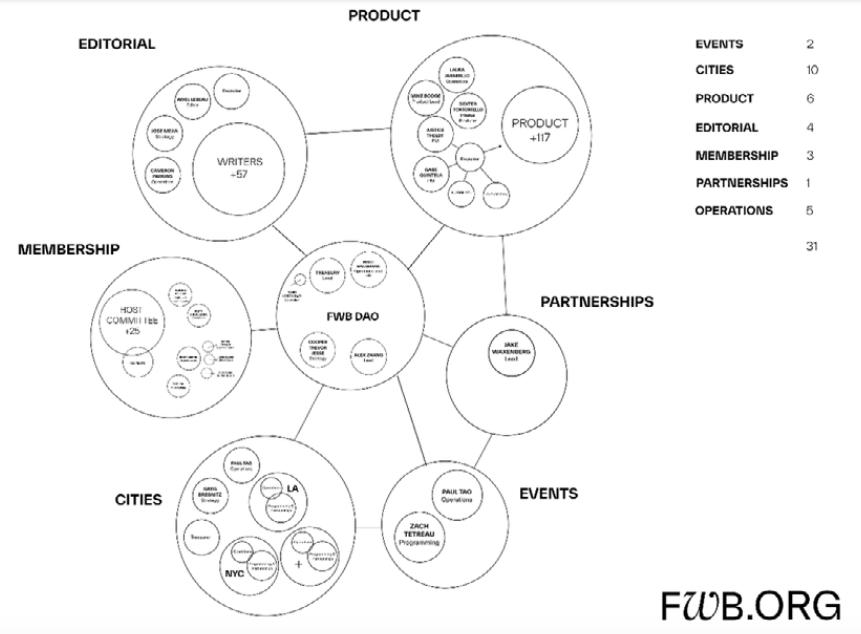
(source:FWB.org)
We need to see a 100x improvement in information flow and decision support tools. You can manage a global DAO or sub-DAO with NFTs or social currencies more easily than you can manage a global company (anyone who is foreign and international knows how incredible it is to build this infrastructure), but that doesn't change Without delegation, the fact that DAO progress could stall when every micro-decision becomes a proxy vote.
image description
(source:
But our early DAOs were actually not that diverse — by design, they rewarded early adopters and “crowds” first. They formalize what we already know about governance: those with money make the rules.
All fair, but only short-term concerns. Escalating from today's status as global plutocrats, DAO contributors and users have access to liquid political capital and empowerment at breakneck speed, and they can do so under a pseudonym. But it’s also collecting taxes, providing benefits, and enforcing compliance. I wouldn't be surprised to see some jurisdictions making it illegal to work with unregistered DAOs as a result. However, other jurisdictions may also invite DAO workers with unique tax laws, explaining the difficulty of collecting taxes without employer and bank oversight.
These things happened so early in this token-controlled world experiment that it nearly exploded my head. This is where future Messari will spend most of its energy.
secondary title
5. DAO's Treasury Administration
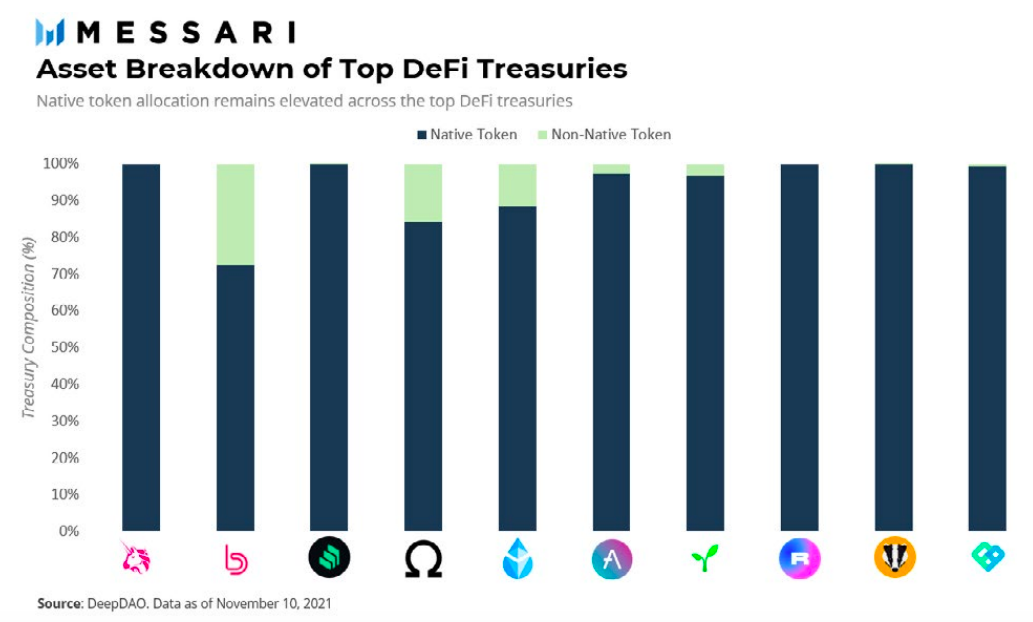
The current bull market is one of the biggest wealth-creating events in the short history of cryptocurrencies. Any institution or individual with reasonable exposure to the industry sees its net worth/balance sheet soaring 5–50x or more over the past 18 months. Some of the top DeFi protocols themselves are now worth hundreds of millions, sometimes billions of dollars, mostly in their native tokens. Two of the most active DAOs, Uniswap ($4 billion) and Compound ($1 billion), have particularly large reserves.
You might look at these numbers and think that DeFi protocols are financially lifetime, but digging into the composition of each treasury reveals the opposite. The vast majority of the “value” of these tokenized treasuries comes from a reflexive belief that the market will always absorb new supply. This can happen in a bull market, but when volume fades, things can loosen considerably. In fact, that's exactly what happened when the stock market crashed in May.
Still, there isn't much diversification in the top project treasuries:
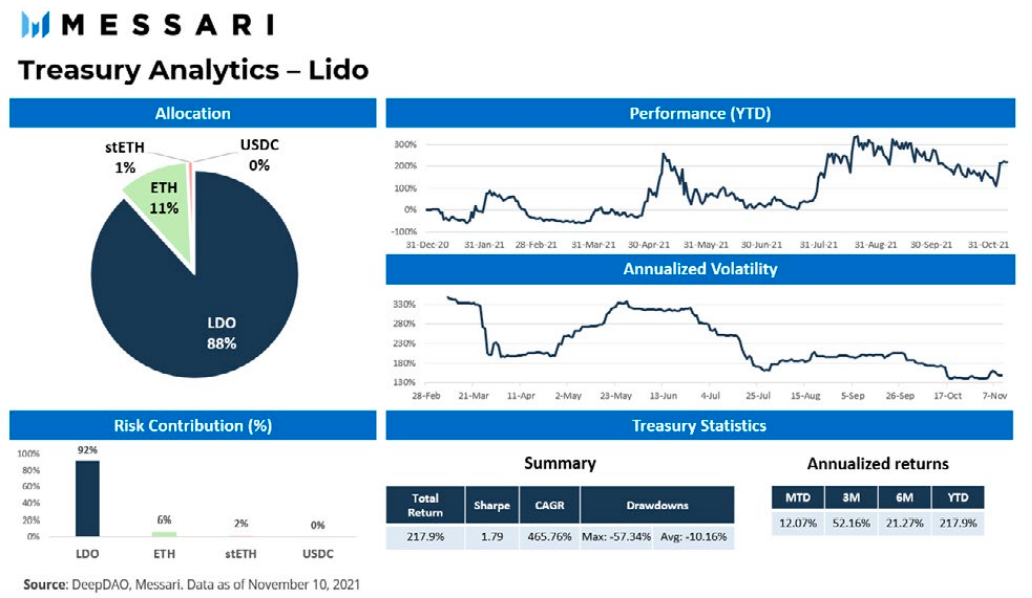
During black swan events, token prices are at the mercy of the market. Some of the best projects that relied on these reserves also struggled to survive the 2018–2019 bear market. And that's before you consider the particular risks of each particular asset: smart contract glitches, hacks, oracle flaws, and code errors can affect a token's price even before the DAO considers remedies that could make the entire affected user population. This can create a vicious circle if the treasury is not managed properly.
Data sources like DeepDAO do a good job of tracking project finances, but don't provide the full context that basic portfolio management tools can. Giving communities better financial analysis can greatly improve their governance decision-making process.A Crisis in Protocol Treasury Management, A Mental Model for Treasuries)
It’s not just about the best practices in token management, it’s about the lack of professional financial managers. The addition of real financial managers presents a huge market opportunity and will help protocols diversify wisely to ensure they are well-capitalized in various market environments. Unfortunately, you're not going to like the first piece of advice most treasury managers make today: start selling. The first-quarter spike wouldn't do the DAO any favors if the assets hit 90% after only a few months.
(must read:
secondary title
6. DAO Investor Relations
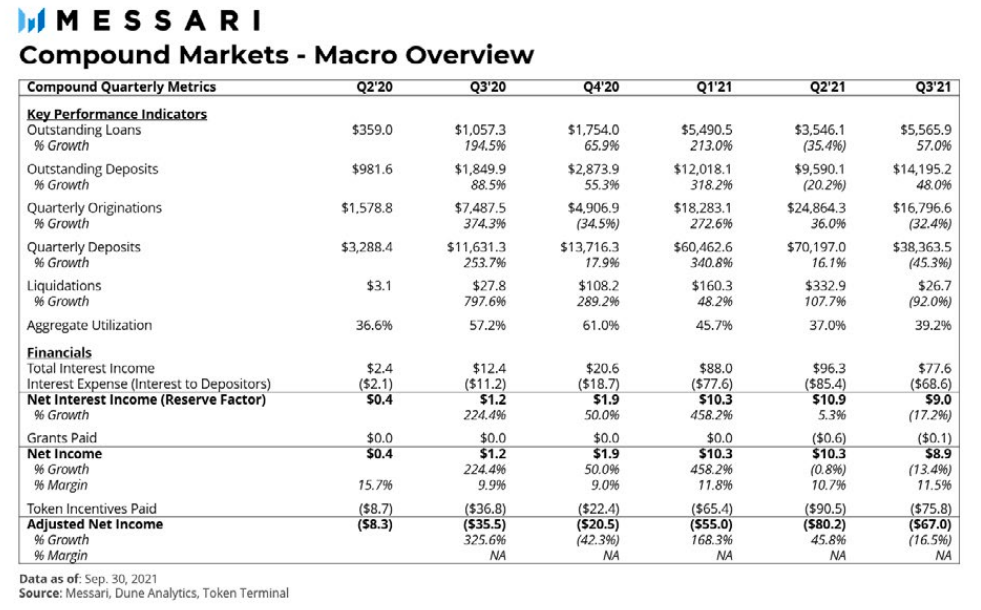
I started writing in the last chapter about how crazy that anyone could create something that looks like ETH's Q3 "10-Q". Investor relations are an essential part of healthy financial markets. In crypto, high-quality information matters up to 11 (up to 11 is a cultural buzzword for something that is maxed out or clearly over the limit) as community relations affect how DAOs interact with investors, liquidity partners, tech How counterparties, core contributors, users, and other network enablers communicate. Strong, transparent financial disclosure is a pillar of good corporate governance, but it is constrained by quarterly accounting cycles that limit the flow of information to only a few times a year.
Token Terminal (basic data), The Graph (on-chain data), Nansen (fund flow), Dune Analytics (aggregated indicators), DeFiLlama (TVL) and Messari (market data and off-chain events) are now tools to help users fully understand the protocol level An essential tool for high performance. In the global decentralized analytics community, the combination of these data sources provides remarkable results. Take Compound as an example.
Our quarterly report offers a glimpse into the future of financial reporting. An analyst and data scientist are able to collaborate to come up with a summary of COMP's protocol-level lending activity over the last quarter (both on a macro and micro level), as well as off-chain events related to community governance and the project's technical roadmap. Such reporting may continue to follow a familiar quarterly, monthly or weekly cadence, but the data is in real time and can be explored and combined by anyone.
While much work remains to be done, the building blocks needed to lay the foundations for a new and improved financial reporting system are finally here. If executed properly, encrypted financial statements will look very different from traditional financial statements. Rather than waiting impatiently for quarterly earnings reports, protocol announcements are dynamic documents powered by real-time data streams directly from the blockchain. All parts are ready to assemble, now it's time to build.
7. Messari: Tying everything together
Happens when you combine learning with access to onboarding incentives (Marketplace), a vibrant contributor marketplace (HR), improved funding management and delegation tools (Finance and Operations), and project reporting/community relations (Management) What? You've got all the solutions you need to build existing governance structures in social structures that replace politics, corporations, and society itself.
I'm excited to share our vision for Messari in 2022: we're building a [redacted].
secondary title
8. Legal framework of DAO
There are usually three things the government will do to dissuade you from doing something it doesn't want you to do: tax it, fine you (or hold you to huge personal liability), or cut you off from your bank. One thing that really needs to be figured out is how DAOs actually work in the real world from a tax, contract law, and compliance standpoint.
In theory, a DAO is actually pretty good at eliminating the "banking" problem, since it's itself a shared bank account. They're also not bad at addressing personal liability issues...if you work anonymously, and you're confident that your fellow citizens in the DAO will do the same, and are willing to accept the group's liability risk if anything goes wrong. But if you think you can join as a member, report your taxes from the DAO, and somehow not report to the government that you are partnering with an unincorporated person, then that would be really bad.
Addressing the issue of contributor accountability and bringing DAOs and their communities into the world of global and local tax, banking, and employment compliance will be important to most ordinary people. a16z has some great suggestions on how to create a legal DAO entity as an unincorporated non-profit association with possible flexible, independent substructures (LexNode echoes some of the same ideas), Wyoming is already leading the country on this status because it recognizes the DAO as a kind of limited liability company. (Fun fact! In 1977, Wyoming was the first state to recognize actual LLCs. It took 11 years for the IRS to recognize this status.) This would also be the case for most DAO-to-DAO or DAO-to- The same is true of commercial requirements for contract work.a16z Framework, The LAO)
Given how aggressive this administration has been with cryptocurrencies so far, I would expect them to be similarly tough on illegal DAOs. Registration in the U.S. is therefore not only about meeting reporting requirements, paying personal taxes, and filing disclosures, but also holds individual developers who hold core tokens accountable in case authorities rule that these are general partnerships issuing unregistered securities . I don't blame the team for moving outside of the US.
(must read:
secondary title
9. New capital allocators
On Venture DAO, the only limit to growth will be the natural law and regulation. The original "this token is definitely a security" line refers to "The DAO" itself. The initial demand for community investment tools demonstrates (even later) how much demand there is for community investment tools for access outside of gated communities in accredited investor territories. Since then, there have been efforts to iterate on the Venture DAO model and make it legal. Metacartel socializes the token investment process and provides a tool that paves the way for liquid GP incentives (more work = more rewards). The organization can invest in anything that might be tokenized: cryptocurrencies, companies, NFTs, other DAOs, virtual real estate licenses, and more. This is a flexibility in speculation that simply doesn't exist in the "real world," and it probably wouldn't exist in the U.S. without an upgrade to our century-old securities laws. If you look at how isolated the crypto community is, it's almost certain that the future will be too. Founders invest in other founders for strategic reasons: goodwill, aligned interests for partners, keeping up with emerging trends, maintaining a high focus on other emerging projects, etc.The Future of Venture Capital, Venture DAOs: So Hot Right Now)
Today, VCs are investing in DAOs. Or DAO's DAO. Or register as an investment advisor to remove the shackles of the SEC that prevents VCs from fully encrypting. Late-stage investors are entering the Series A. Early investors are turning to permanent capital vehicles. It's almost like the smart money knows that capital markets are dynamic and move quickly. Venture DAO is already hot, and barring a setback from global regulators, I bet one of the most active and largest AUM VCs will be DAO by 2025. We've already started to see DAO M&A pick up as well. The next frontier is acquiring a Web2 company into a Web3 company.
(must read:Jesse Walden, Variant
secondary title
10. New information curator
"The Internet built Wikipedia without any economic incentive. Don't underestimate the Internet's ability to build DAOs." -
If you've been following me and Messari for a while, you know I'm bullish on token-driven information management. The basic functionality of v1's tokenized registry has some flaws, but in general, curated marketplaces can replace centralized, ad-driven algorithms, improve credentials and social signals, reduce low-value redundant work, and crowdfund High value unique information work service.
Let's start with the most important premise: curation marketplaces can create crowdsourced quality incentives for mission-aligned communities. "Quality is very subjective!" You say, and it's true - people seem to really enjoy the dopamine (or cortisol?) Sugary, low-nutrient source of information. But web3 does three things differently to change that.
It creates incentives for portable, open user-generated data. Breaking down the data silos of Web 2.0 companies opens up endless possibilities.
It allows you to reflect on what you want to curate at any given time: "Hey Facebook, make me happy, make me nostalgic, inspire me, inform me, show me the conspiracy theory and all the facts about this case."
A DAO will allow you to ally with a tribe or personal signal booster and build a curated marketplace of information around that object.
This opens up the possibility of alternatives to Google Search that look less like page rank and more like custom feeds. Or switch message filters according to your mood. Or getting paid to be a bullshit caller in a post-truth media establishment. Substack has monetized long-form content on the Intellectual Darknet. What's next?





